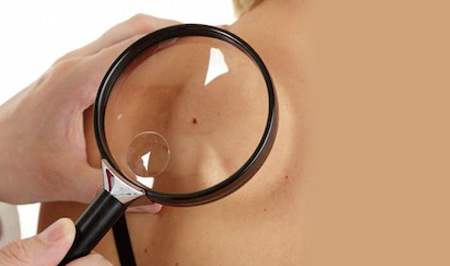We all know that skin cancer prevention and early detection is extremely important. However, most new patients approach their first full body skin exam appointment with some trepidation. The “unknown” associated with what actually occurs at these visits can be intimidating. So with this post, I hope to show you that there’s really nothing to fear when it comes to showing some skin.
Contrary to what most people think, you don’t actually need to have a worrisome mole or dermatological problem to schedule an appointment. I recommend a full body skin exam annually to nearly all of my patients, regardless of whether there are any concerning issues at the time. The reason for this is because we providers examine places that are hard for you to see, such as your back, bottom, and scalp to name a few.
When my patients come in for a full body check, I like to obtain a history first. It’s important to know whether there is a history of skin cancer, atypical moles, or pre-cancerous lesions. If so, I like to know what type (of skin cancer), its location, and how it was treated. It’s also important to know whether there are any moles that have been previously documented or on a “watch list.” For established patients, I review all previous information so that I can compare previous measurements of moles to new ones. If there are any new or changing moles, I note these as well. Lastly, I like to be aware of any current or recent skin problems in general as well as any questions you may have.
After obtaining a careful history, I ask patients to undress to their comfort level. Some leave undergarments on. I like to look at previous skin cancer sites and moles that have been previously measured first. I document these areas carefully. I then typically start the exam at the feet (I have found a melanoma between the toes and so I never neglect this area!) and examine everything anteriorly. I ask people to remove glasses when I examine the face. I then look at scalp and either ask patients to step down from the exam table or lay on their stomach while I examine everything posteriorly.
I point out anything atypical that I find during the exam. We may or may not biopsy the area that day depending on patient preference and necessary technique. I will either ask patients to return in 6 months to a year depending on their skin cancer history and their current needs.
Lastly, all skin-related questions are answered. This is a good time to ask about skin care regimens and the latest products.
As you can see, there’s nothing to fear when it comes to a full body skin exam. We will look forward to meeting you or seeing you for yours soon!
-Sarah Minarick, PA-C




